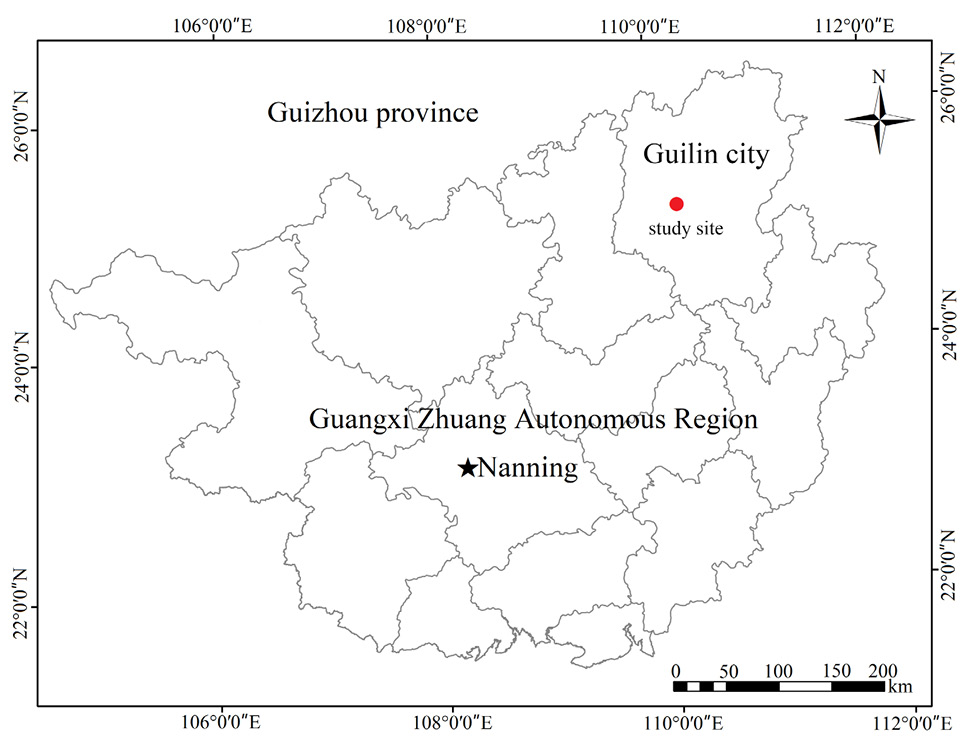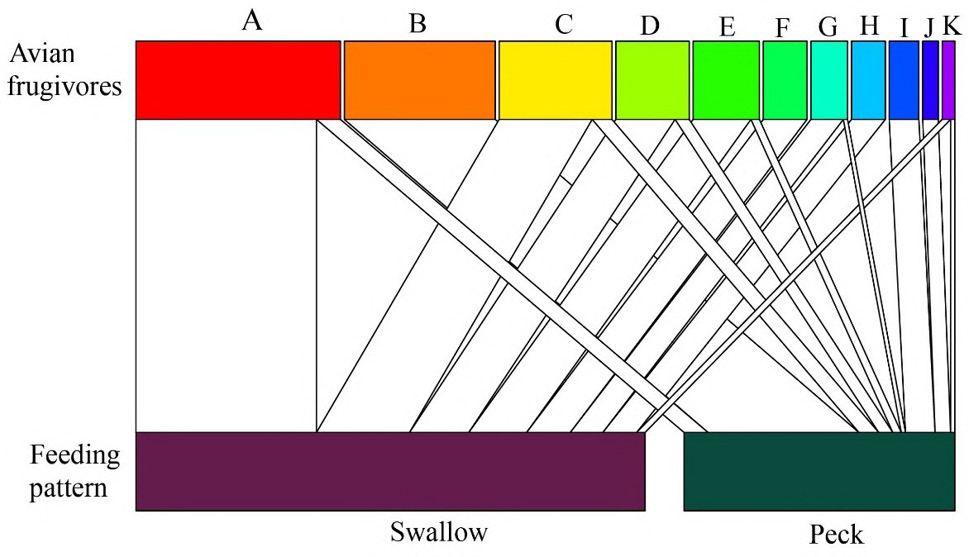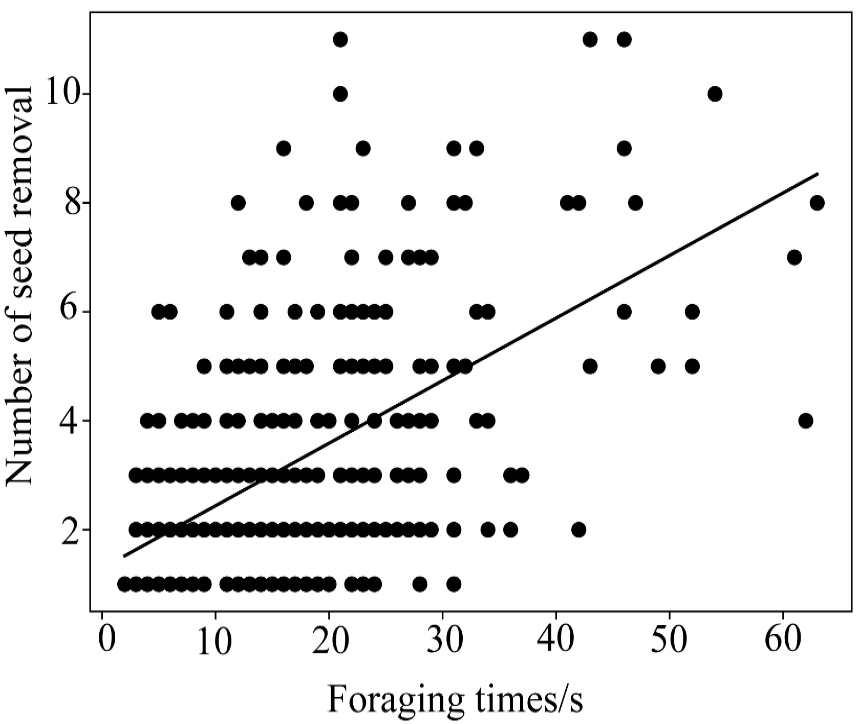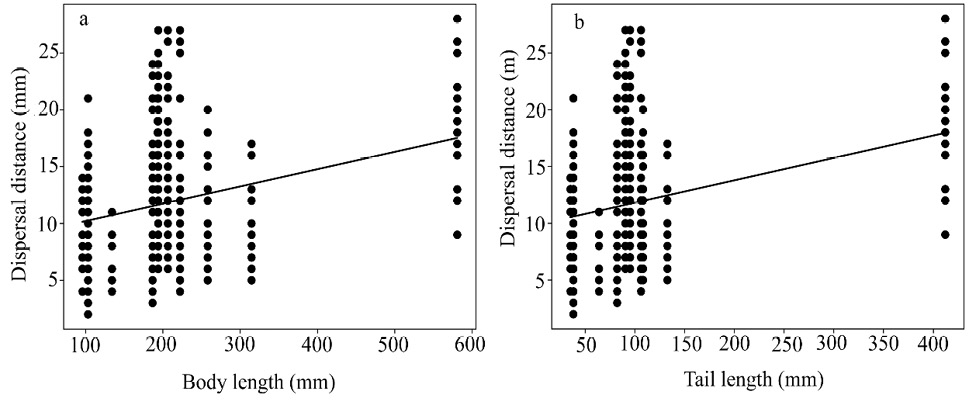Dispersal of Cayratia japonica Seeds by Birds in an Urban Green Space in China
Dispersal of Cayratia japonica Seeds by Birds in an Urban Green Space in China
Yang Pan1,2, Yang Huang3, Guo-hai Wang4* and Qi-hai Zhou3*
Location map of Guilin Botanical Garden, China.
Correspondence relationship between avian frugivores and Cayratia japonica based on feeding behavior. Widths of connecting lines denote the number of observed interactions (wider represents higher intensity of visiting). Avian frugivores: A, Pycnonotus xanthorrhous; B, Zosterops japonicus; C, Pycnonotus sinensis; D, Hemixos castanonotus; E, Hypsipetes mcclellandii; F, Urocissa erythrorhyncha; G, Turdus merula; H, Streptopelia orientalis; I, Parus venustulus; K, Parus major; J, Pycnonotus jocosus.
Relationship between bird foraging time and the number of seeds removed.
Relationship between seed dispersal distance and bird flight traits (a, b).













